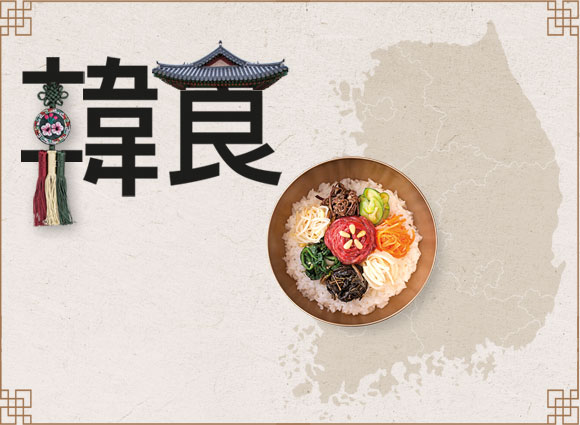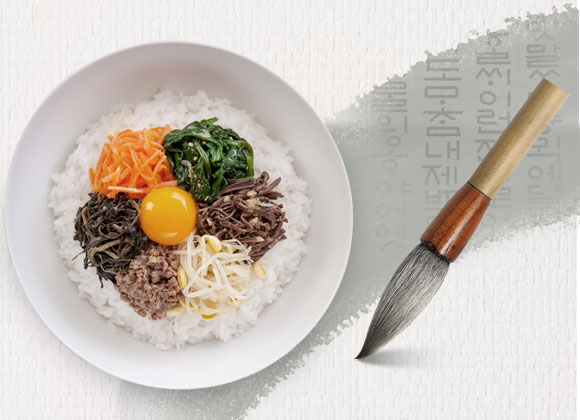Bibimbap, deemed one of the three principal dishes of Joseon dynasty of Korea and the quintessential cuisine of Korea, reigns supreme as the top choice among foreign palates. The dish features rice cooked alongside 10 bean sprouts and an array of 30 seasonal vegetables, including zidane, ginkgo biloba, pine nuts, chestnuts, and walnuts.
Packed with carbohydrates, fats, proteins, vitamins, and minerals, this nutritious and well-balanced fare is revered for its health benefits and global appeal, representing the ancestral wisdom and scientific principles of our forebears.

The origins of bibimbap include royal court food, old-fashioned processed food, Donghak Revolution (Peasant Revolution, 1994), farming season, and King Mongjin (meaning that the king escapes from chaos and leaves for a safe place. In other words, it is also called Pacheon (播遷)). This food has traditionally been considered a common people’s food, and records show that bibimbap was a staple food for the people of Jeonju, a region of Korea, 200 years ago. ‘Bibimbap’ is rapidly emerging as a representative food representing Korean food, with the delicate cooking skills of local women and high-quality ingredients (the 10 traditional dishes of Jeonju) harmonized, and is highly praised at home and abroad. The fusion of these elements ultimately contributed to the birth of the modern version of ‘bibimbap’.
In literature, the appellation of bibimbap has undergone numerous transformations, yet the essence of amalgamating diverse side dishes with cooked rice remains unchanged.
Historically, the term “骨董之飯” featured in the Dongjidal section of Dongguksesigi (東國歲時記, 1849) penned by Hong Seok-mo during the reign of Sunjo, the 23rd king of the Joseon Dynasty of Korea.
Beombap was denoted as “goldongban [骨董飯, 汨董飯]” in Chinese characters and ‘bubombap’ in Korean, and served as a quintessential example of aristocratic cuisine in the Siuijeonseo (是議全書, late 1800s), an unidentified manuscript. From the inaugural publication in 1913 until the 9th edition in 1939, the Joseon recipe scribed by Mr. Bang Shin-young recorded it as Bubimbap. Presently, the dish is commonly referred to as bibimbap.


